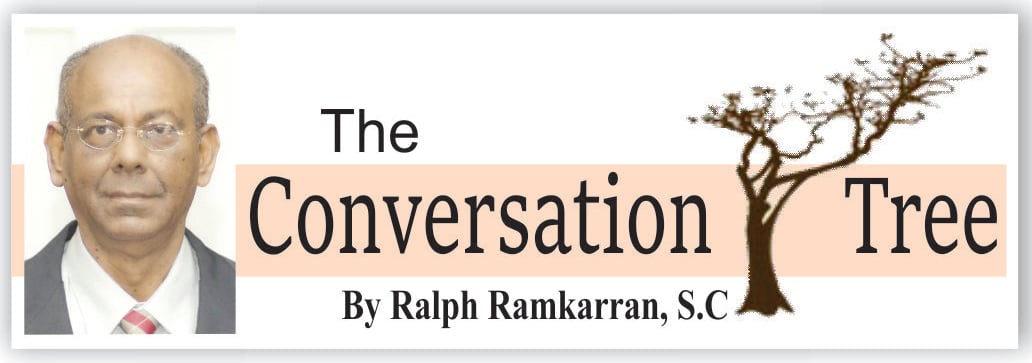October 5, 1992, the date of the return to democracy after a quarter of a century, promised not only a new era of democracy, but of winner-does-not-take-all politics. The first half of the equation has been largely achieved, though still on shaky ground. The second half, recognised as essential for political stability and economic and social progress, has been all but been abandoned. And it has spawned the political instability that now prevails.
Without an overarching and inspiring political direction, for most Guyanese the choice for March 2 is already made. In accordance with long standing tradition, rooted in the ethno-political dimensions of our politics, most Guyanese will vote for either the PPP/C or the APNU+AFC. While Guyana has special historical circumstances which determine the bases of the political choices made by the vast majority of voters, in most democratic countries, in and out of the Caribbean, the choices are also between two main political parties, but ideologically, between social democratic/liberal and conservative. Similar circumstances exist in most of the Caribbean although distinguishing their ideological orientation is sometimes difficult.
In recent years, in some developed countries, small parties representing right wing nationalism, with strong anti-immigrant and pro-white sentiments, have been making headway. Small or third parties in these countries have historically had shifting fortunes. Some have survived, others not. Some have made important impacts and survive, others have faded. The New Democratic Party of Canada and the Liberal Democratic Party of the UK have survived, while the opportunistic Liberal Party in Germany has not.
Guyana has had a different history marked by periods of intense political violence, ethnic suspicion and destruction of property. Even though Trinidad has had a similar history and ethnic composition, it has evolved quite differently. Maybe it’s the influence of our leaders that made the difference. It’s difficult to say. But Guyana had a period in the 1960s of strong third party influence through the United Force which obtained 16 percent of the votes in 1961 and 12 percent in 1964, representing the local, then significant, business community and their supporters. For twenty-five years thereafter, no such influence could have been assessed electorally, particularly for the Working Peoples’ Alliance, because of rigged elections.
By 2005, with the PPP/C in office for 13 years, a revived middle class in place, a failure of the PNCR to offer a forward-looking vision except anger and bitterness and a failure of the PPP/C to reach out to the PNCR with a winner-does-not-take-all system, shifting political ideas began to take root. These eventually found their expression in a new political formation, the Alliance for Change (AFC). After important successes in the 2006 and 2011 elections, the AFC ignored the worldwide history of third parties and, more particularly, the decimation of the United Force (UF) in Guyana after its alliance with the PNC in 1964. The AFC followed the same path of alliance with the PNC, now APNU. At least Peter D’Aguiar of the UF opposed the planned rigging of the 1968 elections. The AFC has shown a total lack of demonstrable independence from APNU, thereby shattering its credibility. The evidence is the local government elections, in which it obtained 4 percent support, as opposed to the 10 percent at the 2011 general elections, appears to have sealed its fate.
On offer to the electorate for March 2 are several new parties. A New and United Guyana (ANUG)—of which I am the General Secretary—the Liberal and Justice Party (LJP), the Federal United Party (the FED UP Party), and the Democratic National Congress (DNC) have so far announced their formation and intention to contest the elections. The critical question in these elections is: Where will the lapsed AFC supporters go? Which party will they support? It is believed that the party which is able to secure the support of the lapsed supporters of the AFC, will be the third party that will carry the day.
Because the AFC has abandoned its independence, which it promised as a coalition member, former AFC supporters, who are looking for another third party, will therefore not trust a political party which they suspect will align itself with one of the two main political parties. Any hint that a third party may potentially offer support to one of the main parties will sound its death knell. They will not take such promises lightly.
The electorate may also be interested in a new governance mechanism for Guyana. It is clear that the majoritarian political system is not working. It was destroyed by rigged elections in 1968. When it was restored in 1992, political instability created by ethno-political suspicion has since pervaded the politics of Guyana. Political instability and ethnic insecurity have become such pressing issues that a new structure of executive governance involving the major political parties is needed. Because the APNU+AFC believed that it would have become a junior partner in such a coalition, it abandoned the idea which was prominent in its Manifesto. It is believed by many that the time has arrived in Guyana for shared executive governance on the basis of equality and that the small parties that advocate this idea have a good opportunity of attracting the support of the Guyanese people.
This column is reproduced, with permission, from Ralph Ramkarran’s blog, www.conversationtree.gy










